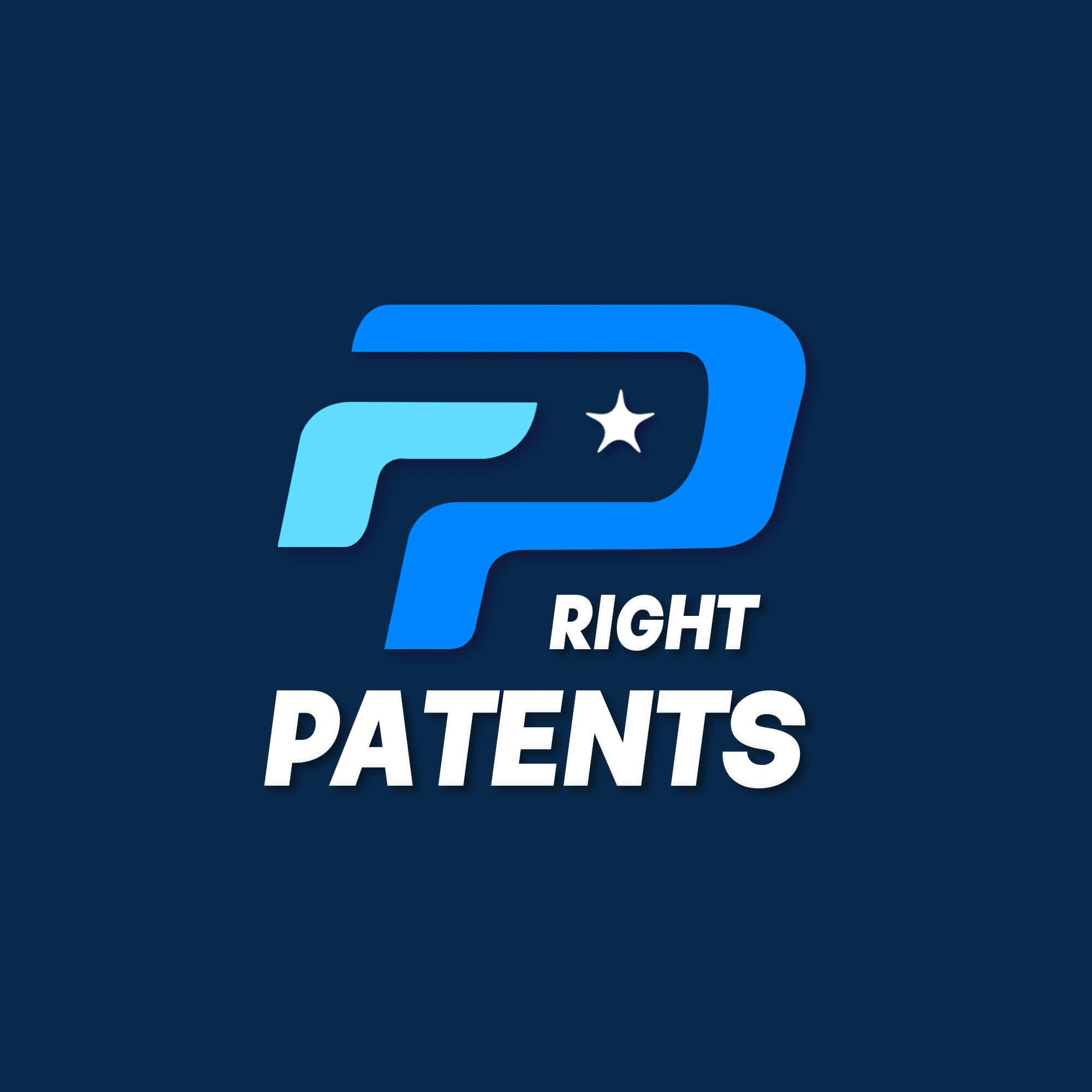Can Idea be patented and protected? Patenting an idea is an interesting topic of debate. Idea is related to the human mind that is functioning round the clock and non-stop. An idea can be abstract or something that can be transformed into an invention or discovery. Idea is not the monopoly of someone. It can occur at any time to anyone. Idea, sometimes, comes suddenly as a reflex action. A person may be walking or sitting in a park or may be in a market place or may be shopping in a mall. One may get idea during morning walk or sitting alone in one of the rooms in the house or even during sleep. Many researchers get ideas while dreaming. A project manager may be struggling to solve some problem at the project site, or a doctor may be trying to find the best option to treat a complex health problem of his patient or a student is not able to solve a problem, they may be trying to solve the issue at hand and are not able to find the right answer, suddenly some idea clicks and the person is able to find a solution to the issue on hand. There is no restriction on the time or for the place for idea to occur. Some ideas may be so clear that they can be transformed into some object, process, procedure or a concept. These ideas may turn into a big project, development of a machine, a software, system, process, and a procedure. Such ideas can change the life of the person who gets an idea and is able to transform that idea into something that is useful in our life. There are number of examples, which has helped people to have an easy life or has reduced their dependency on others. Medical field is full of such examples. A walker (Fig. 1) is a wonderful example that helps persons, who had a fractured leg due to fall or by an accident. A person after surgery of the leg can walk with help of walker. The device is very simple but the idea to make such a product is very innovative, bright and important in life.
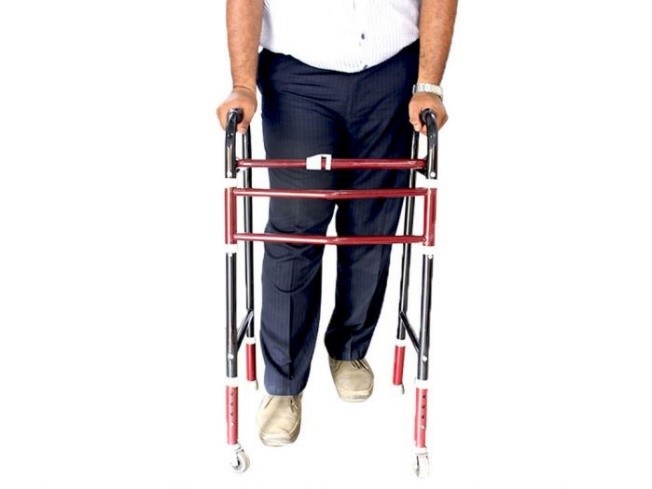


Fig. 1: A walker
Similarly persons suffering from piles require heating therapy with hot water for of the piles. A specially designed tub (Fig. 2) for the purpose is very simple to use and convenient to handle. The idea to design is wonderful. There are numerous examples from medical field that has change the life of people. Such ideas have been transformed into sellable products with fortune to the inventor and an easy life for thousands of patients. If you are the inventor, you would definitely be concerned for the protection of your idea. If timely action is not taken for the protection of your idea, somebody may steal the idea and take patent for the same. You will be left with empty hands. This has to be avoided to ensure that the benefit of your bright idea is not lost. Also, Read: Ten Patent Drawing/illustration Software Packages
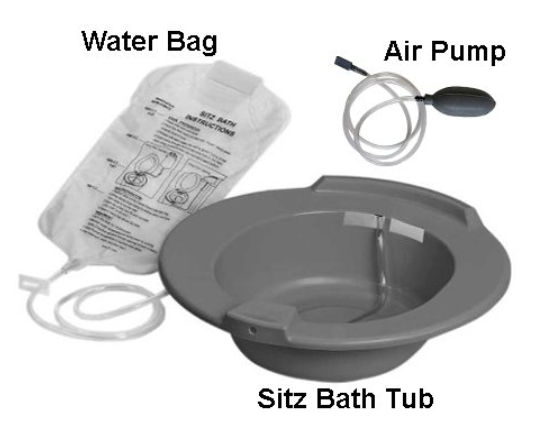


Fig. 2: Sitz bath tub used by patients suffering with piles
Source: https://www.amazon.in/Expertomind-Bathtub-Fissures-Surgery-Recovery/dp/B011BFXO7S
Can Idea be patented and protected?
Protecting an idea
Protecting an idea is one of the toughest thing. While one would like to discuss an idea with friends, family members or colleagues to share your idea or get some clarifications or develop it further. However, danger lies in the leakage of the information. Someone could take the advantage of the idea and get benefitted from it. Designers, scientists and researchers are always under pressure while sharing their ideas and would not like to divulge information to others beyond certain limit so that their hard work of months or years may not get lost. Using your idea, someone else may develop the same or something very close to it and claim as his/her idea. The originator of the idea may lose the advantage of his creativity and hard work. He/she, therefore, looks for protection of his/her idea. The solution lies in transforming the idea into an invention in the form of a product or process and obtain a patent for protecting the invention. Also, Read: How Detailed Accurate Patent Drawings are important for your patent?
Can Idea be patented and protected?
Quinn (2018) answering the question says that idea cannot be protected. He argues that there is no effective way to protect an idea with any form of intellectual property protection. Patents protect invention. Ideas are not protected by a patent or by copyrights. According to him, an idea is an essential first step towards an invention. It is not possible to achieve anything without an idea. Therefore, ideas are critical, and valuable for the innovation. According to Quinn (2018), ideas are not monetarily valuable. There can be no intellectual property protection for idea and no exclusive rights will flow without some identifiable outcome of the idea. If one wants to have protection, the path is ‘idea – invention – patent’. In order to get monetary benefit, merely idea would not help but it is the invention that will provide monetary benefit by patenting it. Also, Read: Google SketchUp for Patent Drawings (Pros and Cons)
What is Patent?
World Intellectual Property Organization (WIPO) (2008) defines patent as an official document given by a governmental office to an inventor on his application, which describes an invention and creates a legal situation. The legal situation is one in which the patented invention can normally be exploited by manufacturing, using, selling or importing. The document ‘the patent’ gives inventor the right to stop anyone else from copying, using, distributing or selling the invention without his permission. The invention may be a product or a process. The patentee has the right to protect his invention for a limited period, usually this period is 20 years. Thereafter, the patent can be renewed. Also, Read: Complying with US Patent Drawing Rules [24 Drawing Rules to follow]
Dehns (2018) describes the patent as grant of a monopoly right for an idea or development which is new and not obvious over anything previously known. A patent does not give the right to the inventor or the owner of a patented invention to make, use, or sell anything. He argues that patent provide a right in the country concerned to prevent others from using an invention in return for public disclosure of the invention. Also, Read: Working with a Patent Illustrator
Features of patent:
- Is granted on submission of an application by the inventor.
- Is granted as a document by the government.
- Is granted for an invention (products or processes) .
- Patentee has rights to stop others to use the patent
- Is granted for a maximum period of 20 years.
- Modifications obvious to a person with ordinary skills not included for grant of patent.
- Disclosures made in any other countries can be relevant to a later patent.
- Enforcement of patent rights is the responsibility of the patentee.
Protection under the Patent Law
Patents protects new technical inventions such as new products and processes (Dehns, 2018). It cannot cover anything which is already available in the domain prior to the filing of the patent. It will also not be able to cover a modification that would be obvious to a person of ordinary skill in the relevant technical field. Dehns (2018), discussing about patent protection, says that the disclosures made any where in the world can be relevant to a later patent claim in UK and most of the other countries in the world. It is of no concern if the inventor was actually aware of the previous disclosures. However, certain things of abstract nature are excluded from patent protection. Also, Read: Patent Drawing Requirements in the USPTO, EPO [Latest Guidelines]
Patent provides the right to the inventor to stop others using the invention claimed in the patent and to seek compensation for damages arising from the infringement. Patents are restricted in the country for which they have been granted. Any person from countries, other than the one where the patent has been granted, can use the patented invention as the owner does not have rights in other countries. It is the responsibility of the patentee to enforce the patent rights in the country of patent granted. In case of an infringement of the patent, the patentee, if necessary, can claim compensation through the court of law. Since obtaining the legal relief is expensive and time consuming, this option is usually the last resort. Also, Read: 2 Major Patent Drawing Mistakes and How To Fix Them
Patentability
Patentability of the patent depends upon number of factors, such as:
- Invention must contain a patentable subject matter.
- It should have useful industrial application.
- It should be a new idea (novel)
- It should show a sufficient ‘inventive steps’
- The disclosure of the invention in the patent application must meet certain standards.
Patentable subject matter
An invention must fall within the scope of patentable subject matter, which is determined by statute, and is defined usually as exceptions to patentability. As a general rule, the patent protection shall be available for inventions in all fields of technology. Also, Read: Patent Drawings for Patent Litigation
The subject matters that may be excluded from patentability may include the following (WIPO, 2008):
- Discoveries of materials or substances already existing in nature;
- Scientific theories or mathematical methods;
- Plants and animals other than microorganisms, and essentially biological processes for the
production of plants and animals, other than non-biological and microbiological processes;
- Schemes, rules or methods, such as those for doing business, performing purely mental
acts or playing games;
- Methods of treatment for humans or animals, or diagnostic methods practiced on humans
or animals (but not products for use in such methods).
Certain kinds of inventions, of which commercial exploitation may contravene public order or morality, may not be covered for patent protection. Also, Read: How Much Does a Patent Drawing Cost?
Industrial applicability
Industrial applicability includes the following:
- The invention should be suitable for use in industry and should not be purely theoretical.
- The invention should be useful to produce a product. If the invention is a process, the process should be useable in producing the product.
The term “industrial” is applicable for wide range of industry without any restriction or limitation. It is important that invention should be in conformity of the laws applicable in the country and region.
Novelty
Novelty and patentability are strongly linked to each other. Following points are important with respect to novelty:
- Novelty is an essential condition for patentability, but it cannot be proved or established. The absence of novelty, however, can be proved.
- Any knowledge, whether written or unwritten, that exists before the date of filing the patent or making an application for priority date of a patent application, is covered under novelty.
- Background of the country, where the patent application is filed, is an important aspect for novelty. The prior art in a country excludes the knowledge from other countries. Even if that knowledge was available in other countries, the same should not have been imported in the country.
- Three aspects that need to be examined to look for the disclosure of the invention as part of prior art, include:
- The description of the invention if available in a published writing or publication in other form.
- If the description of the invention was told in spoken words in public.
- If the invention has been in use in public.
Inventive step (Non-Obviousness)
Inventive step is related to the aspect that invention should not be obvious to a person having ordinary skill in the art. The protection to the patent should not be granted if the invention is already known to prior art or to a person with ordinary skill, who could deduce as an obvious consequence thereof.
The criteria of novelty needs that the invention should be different than the prior state of the art. It is not enough for the invention to be different from the state of the art but the difference should be considerable. The invention should satisfy that it is “inventive”, and is based on creative idea that makes it different and noticeable. It means that the advancement in the invention should be significant and are essential. The invention should be compared with each and every state of the art separately and all the differences should be put together. Also, Read: Why Detailed Patent Drawings are Important?
Three important aspects to be considered to establish inventive step include:
- The problem to be solved,
- Solution to the problem, and
- The advantages of the invention over previous state of the art.
The invention will not be considered as inventive if a person with ordinary skill is able to pose the problem, solve the problem in the manner claimed, and foresee the result.
Disclosure of the invention
Sufficient disclosure of the patent in the patent application is essential to establish patentability of the invention. Following points are important in respect of disclosure of the patent:
- The patent application must disclose the invention in such a manner that a skilled person in the art is able to carry out the invention.
- Claimed invention should be carried out in at least one mode. This would need reference drawings, if any. In some countries, the best mode of carrying out the invention needs to be described.
- Opposition procedure specifying the jurisdiction should be established so that third parties, if any, should be able to raise objections to the grant of the patent.
- Public can file opposition to the patent. Public should be informed of the contents of the patent.
Patent office publishes a notice in an official journal or gazette for inviting any objection to the invention, if any. Patent office informs following to the public:
- The patent application is open for public inspection.
- Patent office will grant the patent if no objection is received with in the prescribed time limit to receive the objection.
Relevant legislation specifies the grounds on which opposition can be filed. Usually, opposition is allowed in respect of non-compliance of any substantive requirement that may include lack on novelty, inventive step or industrial applicability, insufficient disclosure of the invention, or an amendment made to a patent application has gone beyond the original disclosure of the application as filed. In some countries, the opposition to the grant of patent for the invention may be opposed based on the ground that an applicant has no rights to a patent. Also, Read: Importance of Patent Drawings in Reissue Cases
Types of patents
Application for the grant of patent can be filed in three different types:
- Patent for patentable inventions
- Patent for Utility
- Patent for industrial design
Patentable invention
Inventions which qualify the patentability tests are known as patentable invention. The patentable invention may include any technical solution of a problem in any field of activity which is new, involves an inventive step and has an industrial application. The invention may be related to a product, or process, or an improvement in them.
Patent for utility
This category relates to model of implements or tools or any industrial product or of the part of the same. The item should of practical utility due to its form, configuration or composition. A utility model patent is not renewable. It can be registered for a period of seven years.
Patent for an industrial design
An industrial design is a composition of lines or colors or a three-dimensional form that gives a special appearance and serves as an industrial product or handicraft. Also, Read: Expanding Patent Disclosure with Patent Drawings
Patenting process
Patenting process involve number of steps (Fig. 3). Although basic steps of patenting remain same in all the countries but the process may differ with minor deviations from country to country. Following are the steps in general in obtaining a patent:
- Filing an application for patent
- Publication of the patent applied
- Opposition of the patent before its grant
- Request for examination
- Publication of the grant of patent
- Opposition of the patent after its grant
- Decision of the controller of patent
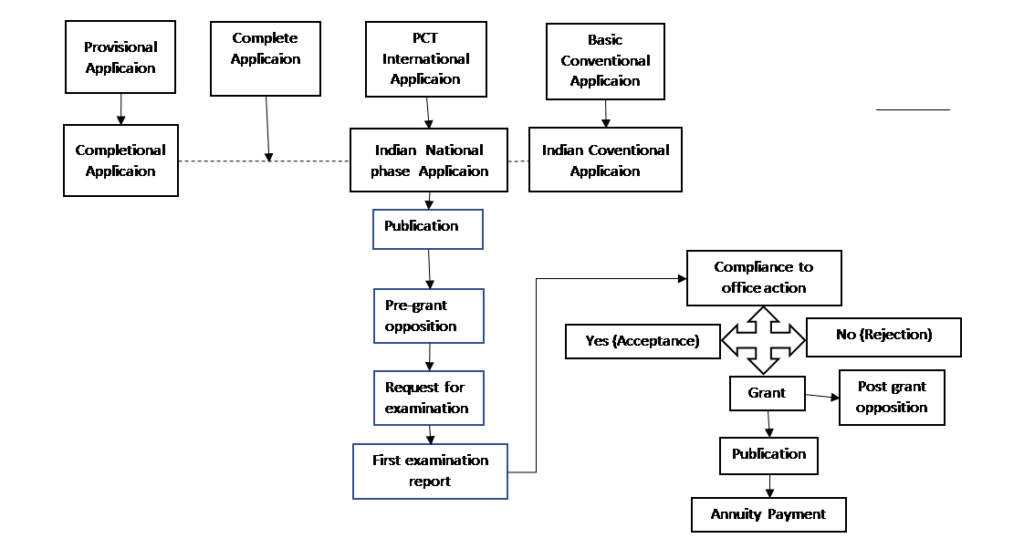


Fig. 3: Patent application procedure flow diagram
Source: IIPRD (2014)
Types of patent application
Patent application can be in five types (NIC):
- Provisional application
- Complete application
- Conventional application
- Patent Cooperation Treaty (PCT) – International application
- PCT – National Phase application
Provisional application
Provisional application is a temporary application with the patent office to claim a “priority date” and when the invention is still in the process of completion. The inventor gets time to study the feasibility of the invention, studying the potential markets, distributors and licensees. Complete application for the grant of patent is to be filed within 12 months of the provisional application. The application is treated as abandoned, if it is not filed within the prescribed period. Also, Read: Patent Drawings as Works of Art
Complete application
A complete application is one that has complete specifications and claims of the invention. If the invention is complete in all the respects, the complete application can be filed directly without going through the process of filing the provisional application.
Conventional application
A conventional application is one that is filed for a patent on the same or substantially similar application filed in one or more of the convention countries. The convention status in the case of India can be obtained by filing the application in the Indian Patent Office within 12 months from the date of filing the first similar application in the convention country.
Patent Cooperation Treaty (PCT) – International application
Under PCT, the patent application is to be filed within 12 months of filing the application in the country, for example in India. PCT covers 138 member countries across the globe. The patent application seeks the patent in number of countries by only one application. Also, Read: How To Prepare Successful Patent Drawings for Design Patents?
PCT – National Phase application
An international application made in accordance with the Patent Cooperation Treaty (PCT) as the first application, can be filed in India within 31 months from the date of filing international application or the priority date (whichever is earlier). The application filed before the Controller in the Indian Patent Office is known as the PCT National Phase application (Sarkar, 2016).
Documents required for filing a patent application
In order to avoid any delay in the grant of patent, all the required documents must be enclosed with the patent application. The list of documents may vary from country to country as may be decided by the government of the country.
Documents, as an example, required in India include the following (NIC):
- A Covering letter- indicating the list of documents;
- Application for Grant of Patent in Form 1 [section 7, 54 & 135 and Rule 20(1)] in duplicate;
- Complete/Provisional specification in Form 2 in duplicate [Section 10; Rule 13]
- Statement and Undertaking in Form 3 [Section 8; Rule 12];
- Power of Attorney in Form 26 (in original) (Rule 3.3 (a) (ii)); (if filed through attorney)
- Declaration of Inventor-ship in Form 5 (only in case of an Indian Application; (Rule 4.17);
- Request for examination: F18
- Requisite Statutory fees (cheque / DD).
Specifications of the invention
Developing specifications of the invention is one of the most critical task. Specifications identify the invention by bringing out its features that presents the solution to a particular technical problem. Specifications provide full comprehension of the essence of the invention. Therefore, specifications should be drafted in such a manner that it satisfy the requirements of patentability, specially the inventive step. It should bring out the claims very clearly. Both, the broad as well as narrow claims should be brought out clearly in the specifications. Three basic requirements in drafting the specifications are:
- The application should relate to only one invention or to a group of inventions from a single general inventive concept. This aspect is important while writing claims of the invention.
- The description of the invention should disclose the invention clearly and with complete details to help its evaluation and that the invention could be carried out by a person with ordinary skill in the art. The main function of the specification is to provide new technical information to third parties. Therefore, specifications should be in simplified language, which can be understood by a person with ordinary skill in the art.
- Specifications must contain claims in clear and concise manner fully supported by the description. Claims enable third parties to know what they may do and what they may not. The claims should not be broader and should be as described in the specifications.
Elements of complete specifications
Following are the elements of complete specifications of a patent (NIC):
- Title of the invention and brief introduction
- What is the prior art?
- Shortcomings in prior art
- Efforts made and solution to shortcomings.
- Summary of invention
- Statement of invention
- Detailed description of invention
- Detail description with reference to drawings
- Examples
- Claims
Drawings of the invention
Drawings form an important part of the specifications of an invention. They describe the invention and explain its functions. The drawing should be able to illustrate the plan, elevation and sideview of the invention. An exploded view of the patented product helps in describing the invention with greater clarity. If the invention is an electrical circuit, a circuit diagram will be useful. If the invention is related to a chemical field, a process flow diagram will be more appropriate. Drawings should be developed to meet the requirements of the field of application. Also, Read: Avoiding Common Errors in Drawings for Design Patents
Exclusive Rights of the Patent Owner
Patent Owner has some exclusive rights on his patent granted under the patent law. He has the authority to decide on the exploitation of the invention. It is he, who decides who can or cannot exploit the invention. Such rights are for the duration of the patent granted, provided that he has paid the necessary renewal or maintenance fees.
Limitations on the exclusive rights of the Patent Owner
Patent Owner’s exclusive rights are subjected to certain limitations (Fig. 4), which include:
- Right on monopoly
Courts can amend or invalidate the monopoly right of the Patent Owner if it find any defect about the invention after the grant of the patent.
- Payment of license fee or royalty to the earlier Patent Owner
In case, the invention is an improvement or development of an earlier subsisting patent, the Patent Owner is required to obtain a license and pay royalties to the earlier Patent Owner.
- Right to work his invention either on his own behalf or licensing others to use
Patent law puts a limitation on the Patent Owner about his rights to work his invention on his own behalf or licensing others to use it, if he wishes to retain his monopoly on the invention.
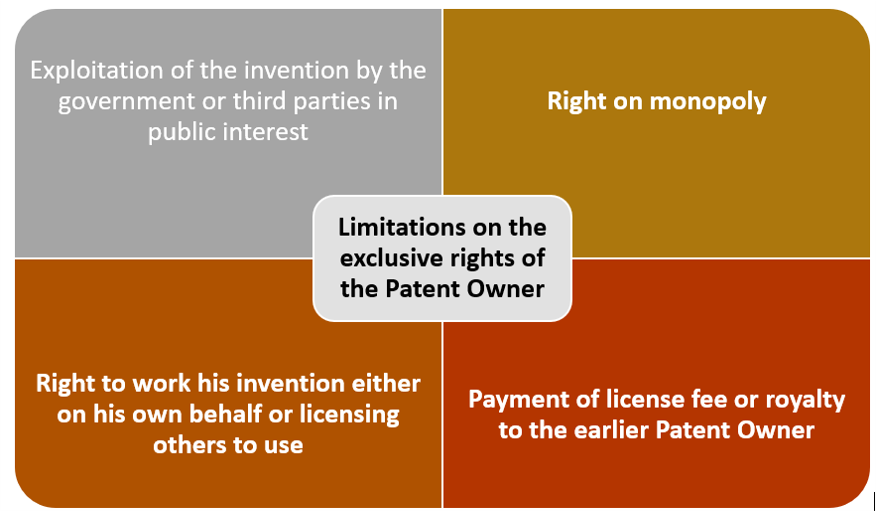


- Exploitation of the invention by the government or third parties in public interest
Patented inventions may often be used by Government or by third parties authorized by
Government in public interest, if it is so required. The terms and conditions of use are fixed by agreement or by the courts.
Subject to the limitations provided by the law, the grant of patent allows the Patent Owner to exclude others to exploit the patented invention. The Patent Owner is the only one allowed to exploit the invention as long as others are not authorized by way of license to do so. The exclusive right empower the Patent Owner in two main applications in practice: protection against infringement and facility to assign or license the rights in part or whole. Also, Read: Do Provisional Patent Applications require Drawings?
Infringement of exclusive patent rights of Patent Owner
Unauthorized exploitation of the patented invention by third parties is known as infringement of the exclusive rights of the Patent Owner. The inventor incurs considerable efforts and expenses in the development of the invention for industrial use. He would like to recover the expenses incurred by him through exploitation of the patented invention, particularly the sale of products that incorporate the invention.
Companies are using patent as a strong marketing tool. Patent is a certification of uniqueness of the new product, which other products do not have. Companies focus on improving their existing products with additional features or develop all together a new product with additional features. They get the product patented and brig it to the market to exploit its uniqueness. Apple, Samsung, Siemen, BMW, Maruti, Fords, Intel are some of the examples in this regard. Also, Read: File Design Patent on Your Own
Conclusion
Ideas come from human mind and can come to any person at any time and at any place. Ideas get transformed in to inventions, which lead to products and processes. Commercialization of products and processes creates business bringing fortune to inventor or the users of the invention. Ideas can not be protected. For protecting an idea, it must be transformed into invention, which can be patented and gets protection under the patent law of the country. Protection to patent is available in the country where the patent has been applied and granted. Patent is a document given by the government of the country and offers protection for the invention from unauthorized persons. The journey for the protection of an idea is ‘idea – invention – patent’. Invention can get a patent provided the invention is patentable and satisfies the criteria of patentability. An inventor has to make an application for grant of patent which should be supported with the specifications and drawings. Application for patenting an invention can be a provisional application or a final application depending on the stage of the invention. A patentee gets certain exclusive rights with certain limitations. A person getting an idea should covert the idea into an invention and should apply for its patent. Since patenting process has certain specific steps to be followed and are to be supported with professionally developed specification, claims and drawing, it is always preferable to take help of expert organization to save on time and cost in obtaining the patent. Also, Read: How to Represent Transparent Patent Drawings [With Real Examples]
Reference
- Dehns. 2018. Patent. IP Stars. 1-2. www.dehns.com
- NIC. Patent Office Procedures. Intellectual Property India, GOI. 1-34.
- http://ipindia.nic.in/ipr/patent/patent_FormsFees/Fees.pdf
- IIPRD. 2014. IP Practices in India.
- Quinn. Gene. 2018. Protecting an Idea: Can Ideas be Patented or Protected? IP Watchdog. Nov. 17,2018. 1-5.
- Sarkar, Biswajit. 2016. Patent Registration in India – Procedures ans Aspects. Intellectual Property, Patent. Feb 5, 2016.
- WIPO. 2008. WIPO Intellectual Property Handbook. WIPO Publication No.489 (E). 17. WIPO. 2015. WIPO Guide to using Patent Information. WIPO Publication No. L434/3E, ISBN: 978-92-805-2651-6 updated July 2015. 1-43.
